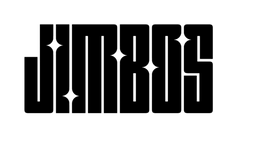Quivr Foam Cannon Review + Setup Guide
The Quivr foam cannon is a solid, budget-friendly way to get thick, clingy foam—if you set it up right. Below is our hands-on review, optimal ratios, pressure washer requirements, and fast fixes for watery suds.
Quick verdict
Pros: Simple to use, good foam density with the right soap, wide fan pattern, and consistent draw. Cons: Like most budget cannons, it depends heavily on water hardness, orifice size, and soap quality. If you feed it good soap and correct PSI/GPM, it performs like pricier units.
Pressure washer requirements
| Spec | Recommended | Why it matters |
|---|---|---|
| PSI | 1,600–2,300 PSI | Higher PSI improves foam “cut” and projection |
| GPM | 1.2–2.0 GPM | More flow = more foam volume |
| Orifice | 1.25mm (default) or 1.1mm for low-output machines | Smaller orifice helps generate foam on compact electrics |
Tip: If you run a compact electric washer (e.g., 1.1–1.3 GPM), swap to a 1.1mm orifice for a noticeable foam increase.
Best soaps to pair with Quivr
Foam cannons multiply whatever your soap gives them. Choose a high-lubricity, coating-safe formula with stable foam.
- Top pick: Super Soaper – dense foam, slick glide, clean rinse.
- See the full list: Best Soap for Foam Cannon – 2025 Buyer’s Guide.
- Already shopping ceramic shampoos? Best Car Wash Soap for Foam Cannon (Foam Wash Lab).
Exact dilution ratios (start here)
| Use | Reservoir Mix (32 oz) | Notes |
|---|---|---|
| Standard foam wash | 2–4 oz soap, top with warm water | Start at 3 oz; adjust knob 50–75% open |
| Pre-soak (dirty car) | 3–4 oz soap, warm water | Let dwell 2–3 min; don’t let it dry |
| Coated cars (maintenance) | 2–3 oz coating-safe soap | Follow with light contact wash + plush towel |
More ratio details here: Foam Cannon Soap Ratio Guide.
Soap We Use with Quivr: Super Soaper
Stable, dense foam and serious lubricity for a safer contact wash—without dulling coatings or leaving residue.
Setup & tuning (step-by-step)
- Fill the bottle: Add 2–4 oz of Super Soaper, then warm water.
- Check the orifice: Use 1.25mm by default; switch to 1.1mm for compact electrics.
- Set the fan: Start wide on horizontal panels, narrow for bumpers/rockers.
- Adjust draw knob: Begin 50–75% open; increase until foam is creamy and slow-sagging.
- Work top-down: Roof → glass → hood → doors → lower panels.
- Contact wash: Use a soft mitt/towel; flip often. See Best Car Drying Towel – Full Guide.
- Rinse & dry: Sheet water, then blot dry with a plush towel or use air + towel pairing.
Real-world performance (our notes)
What impressed us
- Generates clingy foam even on 1.2 GPM machines (with 1.1mm orifice).
- Fan control is wide and predictable—great coverage.
- Draw knob has enough range to tune for soft/hard water.
What to watch for
- Inline screen can clog with hard-water minerals—clean monthly.
- Very thick soaps may need a touch more dilution to avoid pulsing.
- Over-tightening the bottle can pinch the pickup tube—hand-tight only.
Troubleshooting: watery foam or sputtering
| Symptom | Likely Cause | Fix |
|---|---|---|
| Foam is runny | Too little soap / low PSI / hard water | Add 0.5–1 oz more soap, warm water, open draw knob, or use 1.1mm orifice |
| Sputtering / pulsing | Soap too thick / filter clogged | Thin mix slightly, soak filter in warm water + vinegar 10 min |
| Good foam then drops off | Bottle siphon issue / tube pinched | Re-seat pickup tube; avoid over-tightening bottle |
| Streaks on paint | Soap dried on panel / sun exposure | Work in shade; foam smaller sections; rinse sooner |
What to use after the foam stage
- Drying towels: See our comparison: Best Car Drying Towels.
- Maintenance protection: Best Ceramic Sprays – 2025 Comparison.
- Microfiber brand check: House of Rags Review.

Build Your Wash System
Pair the Quivr cannon with Super Soaper for foam, Massive Drying Towel to finish, and Tough As Shell for protection.
FAQs
Does Quivr work with compact electric pressure washers?
Yes. Use a 1.1mm orifice and warm-water mix for denser foam.
What’s the best soap ratio to start with?
Start at 3 oz per 32 oz bottle. Adjust the draw knob until foam clings for 60–90 seconds without sliding off fast.
Do I need a special towel after foaming?
Use a plush, high-pile drying towel to prevent micro-marring. See Best Car Drying Towels.




